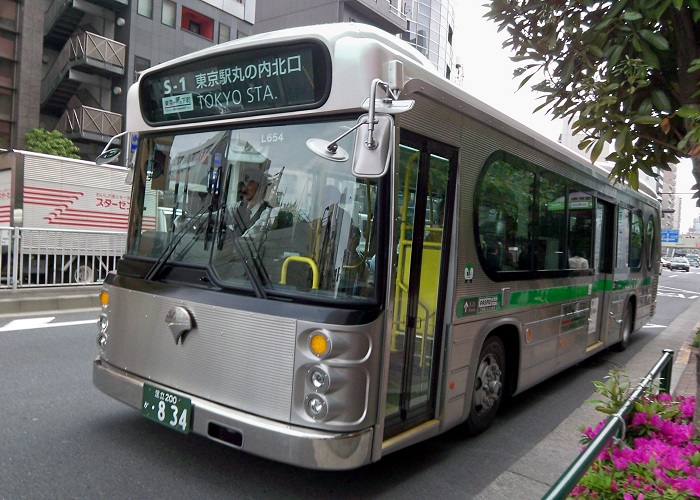Every half hour Tokyo’s sightseeing bus, the Shitamachi, departs on a journey across the city through its older and more characterful districts, with useful information on nearby sights in English displayed on screens inside, and you can hop on and hop off wherever you like. This is by far the easiest and most interesting way for you to explore Tokyo on your first day without puzzling over subway and train maps and working out which travel passes to buy! On the bus you can simply buy a Toei bus one-day pass and this will give you unlimited travel on the Shitamachi bus for 500 Yen, which is about $6 or £4. From start to finish straight through takes just over an hour, it’s easy to spot the bus itself, metallic silver with a green stripe and round windows at the back. There are 7 main stops on the route, and I will tell you about some of the top attractions at each one.The start and end points of the Shitamachi bus service are Tokyo Station and Ryogoku Station. At Tokyo Station the bus departs from the Marunouchi North Exit, bus stop no. 1 outside the OAZO building, and the first bus is at 11am on weekdays, and 9am on weekends, the last departs at 6.30pm every day. From Ryogoku Station heading the other way, the buses leave from the West Exit at 5 minutes to and 25 minutes past the hour.
1. Tokyo Station – the best attraction in Tokyo near here is the Imperial Palace Gardens, and you can stroll around these free of charge, or even borrow a bicycle on Sundays (see previous post Fun and Free things to do in Tokyo). For panoramic views of Tokyo, head up to the 36th floor of the Marunouchi Building opposite the station where there are observation windows at the restaurant up there. This is also a great area for designer shopping with most world-class brand names along Naka-dori street.
2. Next stop is Nihombashi Station, and the famous Mitsukoshi Department Store, established in 1673, is nearby. If you are thinking of buying traditional Japanese paper goods, art, pictures, washi paper and postcards, the Yubendo stationers should be your first port of call.
3. Then to Akihabara, known to the world as ‘Electric City’ where you can find. Japan’s latest electronic goods in 500 shiny shops. You may like to visit Tsukumo Robot Kingdom to see if you need one to help around the house, or there’s the Anime Centre for those fascinated by pop culture.
4. Further north to Ueno, and as well as Ueno Park with its zoo and gardens you can also browse hundreds of market stalls at Ameyoko Shopping Street. However, this district boasts several very fine museums – the Tokyo National Museum, National Museum of Western Art, Museum of Nature and Science and the Metropolitan Art Museum for example.
5. The bus now turns east to a lesser-known district called Kappabashi, famous for its food, kitchen goods and tableware – even the very realistic wax models of popular dishes you see in restaurant windows! You can buy these at Tokyo Biken.
6. Close to the river is Asakusa, perhaps Tokyo’s most popular temple, also known as Senso-ji, with its giant red lantern over Kaminari-mon gateway, and shopping street, Nakamise-dori, that sells all sorts of traditional goods and perfect souvenirs.
7. The final stop for the Shitamachi bus in Ryogoku on the other side of the river. There are two major Tokyo attractions here, firstly, the Sumo Stadium (tournaments in January, May and September) and Sumo Museum, and also the superb Edo-Tokyo Museum whose exhibits are displayed in an imaginative and innovative way.
For more information please email Tara@ReadyClickAndGo.com or check our website at www.ReadyClickAndGo.com











